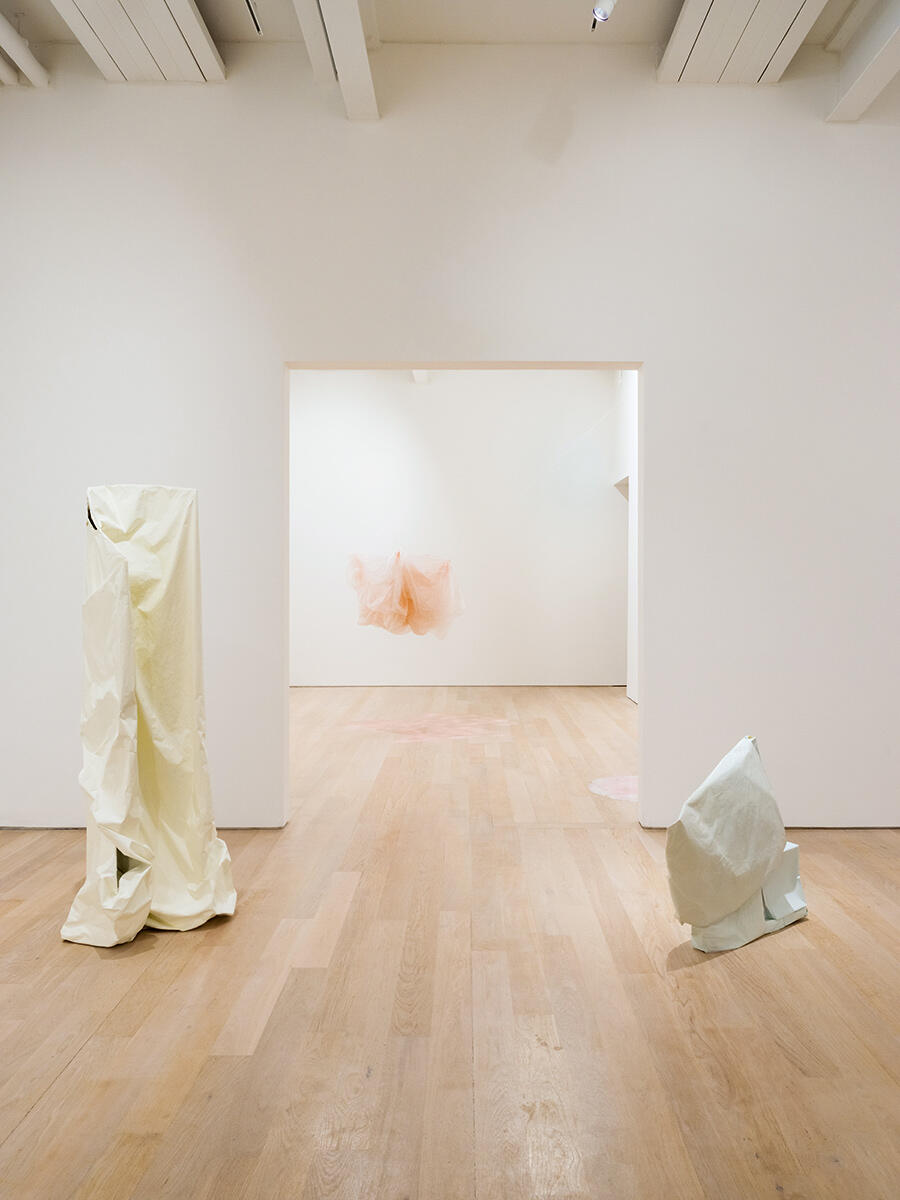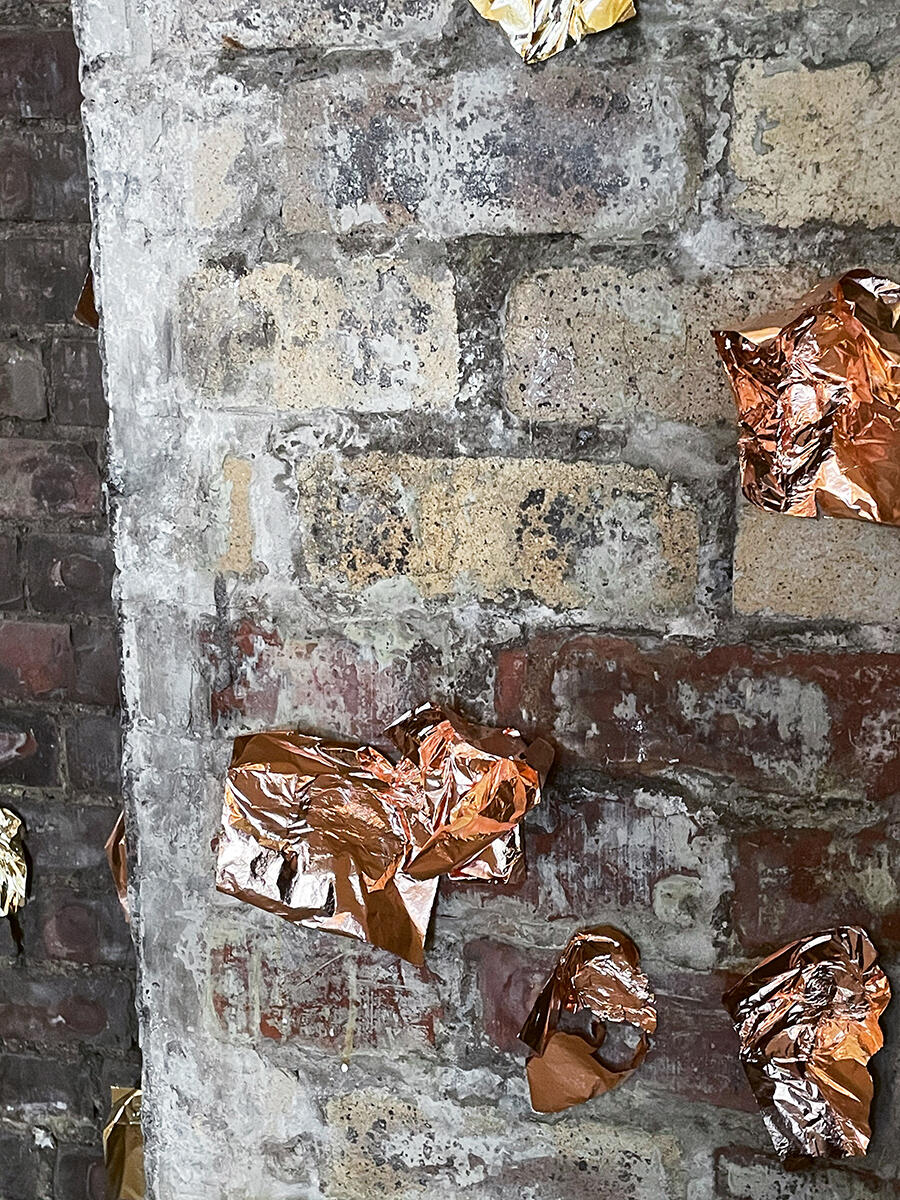Karla Black’s Trouble with Meaning
At Fruitmarket, Edinburgh, the artist’s retrospective approaches materials in a child-like manner with little regard for the objects’ origins or histories
At Fruitmarket, Edinburgh, the artist’s retrospective approaches materials in a child-like manner with little regard for the objects’ origins or histories

There is a contradiction at the heart of Karla Black’s practice that I wish I found as beguiling as everybody else seems to. On the one hand is the artist’s defiant rejection of contemporary art’s tendency towards exegesis in favour of an emphasis on child-like, pre-linguistic, material playfulness. On the other is an overbearing desire to control how the work is presented, maintained and received by audiences.

The contradiction is made clear by Black’s occasional performance practice, which highlights the gap between the making and the exhibiting of her works. In the catalogue accompanying her current exhibition, ‘sculptures 2001–2021: details for a retrospective’, she describes art as a ‘raw, animal, creative moment’. Each sculpture or installation is therefore a lingering relic of a performance without an audience. The work is a remainder, a reminder that, while the artist may have been free to imagine, make, disrupt and play, the audience must simply observe the aftermath. Black describes her work as 'almost sculptures' and yet they must be maintained in the same state of almostness for months at a time. What could be less ‘raw’ than remaking an installation exactly as you did ten years ago?

Black has been given free run of Fruitmarket, newly expanded as part of a GB£4.3 million development. Old works occupy the pre-existing, white-walled spaces, showcasing Black’s attractive, candied aesthetic. Upstairs is a gallery-filling installation, Punctuation is pretty popular: nobody wants to admit to much (2008/21): a landscape of pale-pink plaster powder covering nearly the entire floor. Red, orange and lime green threads form curling lines along the ground or dangle from the rafters. The white walls glow a little with reflected pink. In the ground-floor galleries, standing upright or suspended from the ceiling, are two dozen sculptures dating back to 2006 in Black’s characteristic materials: polystyrene, soil, cellophane, cardboard. All may be abstract, but it’s hard not to think of sweet things (meringue, spun sugar, tottering wedges of coffee cake) or to see the muted pastel shades as flavours of ice cream (chocolate, pistachio, strawberry). Black’s aesthetic makes tackiness tasteful.

By contrast, Fruitmarket’s new warehouse space, designed by Reiach and Hall architects, is rougher and darker, with exposed brick and grey-painted steel girders, and Black has responded accordingly with Waiver for Shade (2021). Riffing on the square, messing up the newness, Black has scattered soil across the ground and stuck toilet paper to the walls. Street-facing windows have been smeared with paint and Vaseline. Black is known for finding beauty in mundane materials but here she does the opposite: sheets of gold, no longer shorthand for luxury, are instead employed as wavering wall tiles or wobbly cobbles upon a giant molehill. ‘Never as nice as it should be,’ is how Black rather brilliantly described gold leaf in a recent interview with Chitra Ramaswamy for ArtUK.

Black’s installation reminds me of Dineo Seshee Bopape’s 2018 solo show ‘[when spirituality was a baby]’, a floor-spanning installation of earth and gold at Collective, Edinburgh. But where Bopape is alert to the relations between materials and the energies that charge the world with significance, Black seems to want to cut her objects off from all of this uncontrollable complexity (people, places, histories), and to close down the possibility of meaning. ‘I honestly can’t even understand what the word “meaning” means’, she told Ramaswamy. Unlike Black, I see a world alive with signification: nothing ever really means nothing. Every material has a history (where has all the soil come from?) and a future (what will become of the polythene in Protective Edge, 2009/21 when it outlasts its temporary status as art?). Black has a deft way with materials, but these works have no life. The raw moment is muted, the animal muzzled; I stand in a silent gallery hearing not a song nor a howl – nor even a whisper.
'Karla Black: sculptures 2001–2021' is on view at Fruitmarket, Edinburgh, until 10 October.
Main image: Karla Black, Punctuation is pretty popular: nobody wants to admit to much (detail), 2008/21, plaster powder, powder paint, thread. Courtesy: the artist, Galerie Gisela Capitain, Cologne and Modern Art, London; photograph: Tom Nolan
























